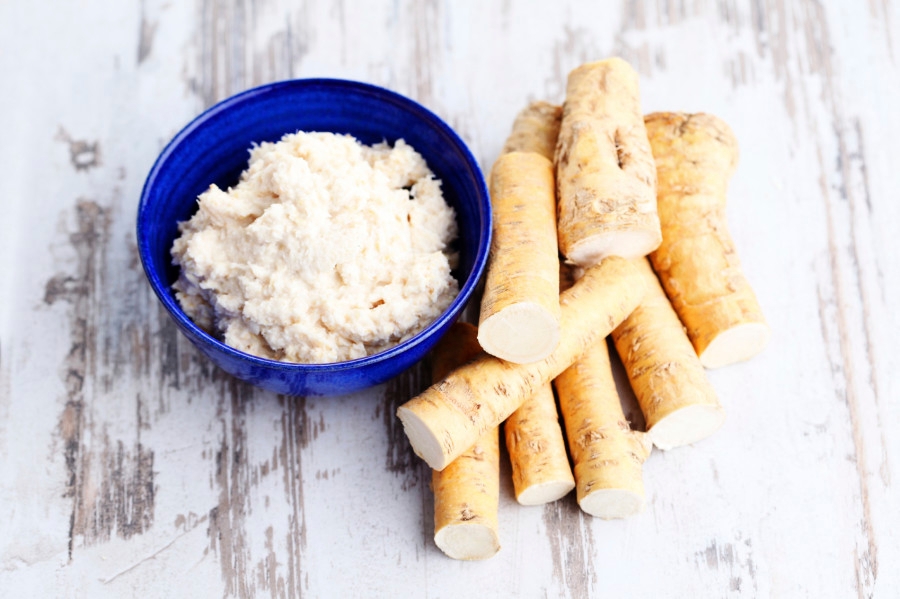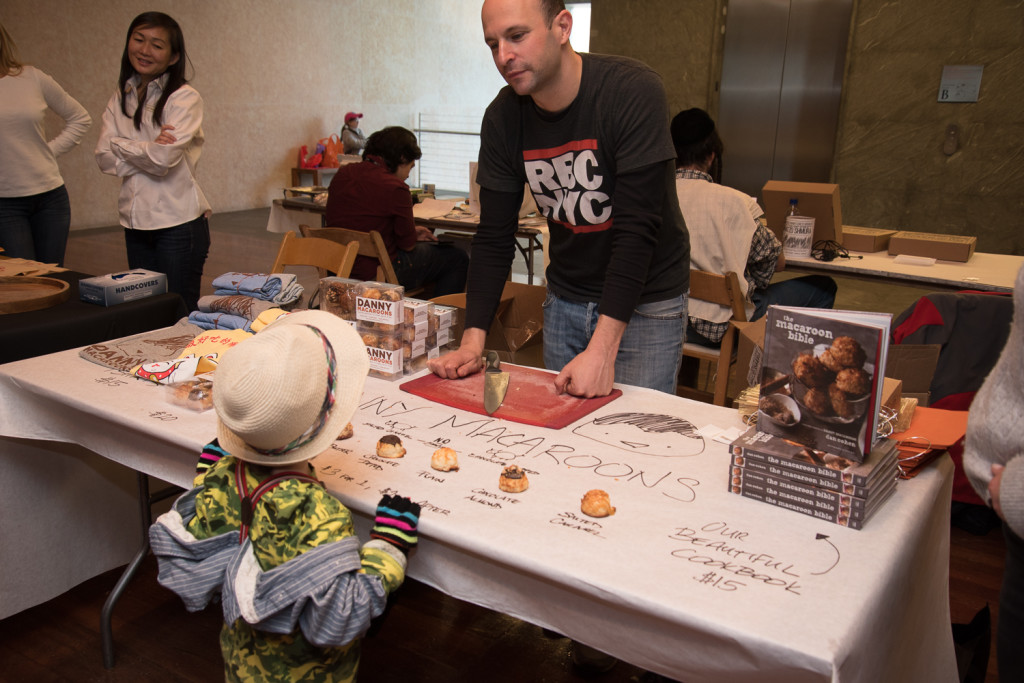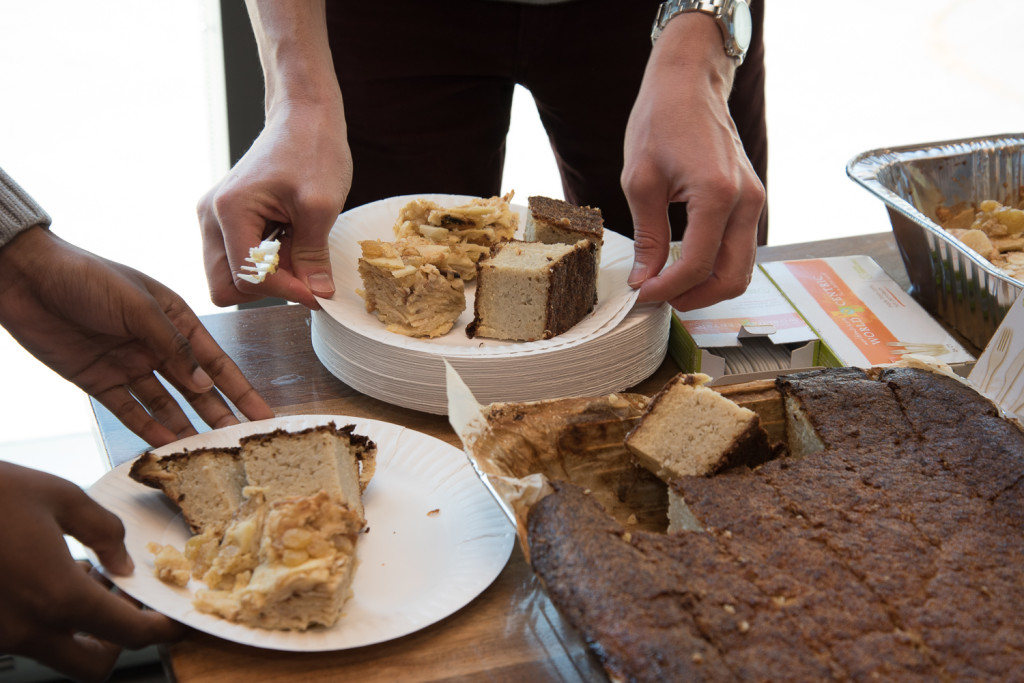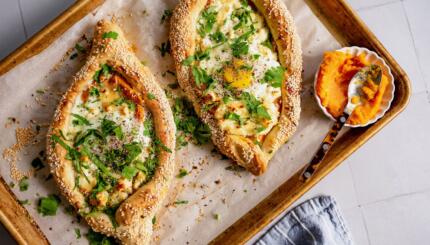As you know, New York City is full of fresh new takes on classic Jewish comfort foods, like matzah ball soup, bagels and bialys. Matzapalooza, presented by the Workmen’s Circle, The National Yiddish Theatre Folksbiene and the Museum of Jewish Heritage, brought many of the leaders in this exciting food movement under one roof last Sunday for a celebration of Passover foods and traditions.
There was noshing for everyone: macaroons from Danny’s Macaroons, locally-made matzah from the Yiddish Farm, egg creams made with U-Bet chocolate syrup and Brooklyn Seltzer Boys bottles, and a variety of horseradishes from Holy Schmitt’s.
Photo by Avia Moore
The Nosher celebrates the traditions and recipes that have brought Jews together for centuries. Donate today to keep The Nosher's stories and recipes accessible to all.
It’s rare to see Passover foods at the heart of a food festival–matzah definitely isn’t everyone’s favorite. But Matzapalooza was established, in part, to innovate and reimagine the , and ask questions like, “Why do we eat what we eat on Passover?” and, “How can we make these traditions more meaningful for ourselves, personally?”
Food is central to these questions. Executive director Ann Toback explained that, “Food, especially now, is a doorway to learning more about Jewish culture and identity.”
Presentor Jeffrey Yoskowitz of the Gefilteria, looks at how food has been interpreted over the years. Yoskowitz equated the conveniently boxed and jarred Passover foods to “the gray, the antiquated and the Old World,” and emphasized how these foods can make a comeback when they’re prepared with fresh ingredients and creativity. He incorporates bright and colorful dishes and plenty of lacto-fermented vegetables at the Passover table.
Photo by Avia Moore
Avery Robinson focused on the history and culture of , and prepared an enormous tray of it for his appreciative and multigenerational audience (above). Having written a masters thesis on kugel, Avery had recipes that spanned centuries and plenty of other historic kugel documents in hand. Kugel, he argued, is THE Jewish soul food, and tastes like “all is going to be better.”
If you’re interested in re-imagining your seder this year, start with new food traditions. Try moving away from the boxed and jarred Passover foods and try to make it yourself! Here are some takeaways:
- Kugel technically falls into the category of a pudding, which to my surprise, is not just a sweet dessert. A pudding is, by definition, “a kind of food that can be either a dessert or a savory dish.”
- Speaking of puddings, there are lots of other great puddings to try, like Apple Charlotte (Apple Shalot), which is made with cinnamon-spiced apples and wine-soaked raisins. It can be made with matzah for Passover.
- If you’re making an apple charlotte this Passover, using egg whites will make it light and fluffy.
- Lacto-fermented vegetables are foods that are pickled and preserved with just salt and water–not vinegar. (Think sour pickles, pickled beets, briney horseradish or sauerkraut.) These foods were really important Ashkenazi foods that promoted healthy digestion and immune systems.
- Horseradish is in season during Passover, which is one reason it’s so widely eaten during this holiday.
- Want to try making your own sour pickles? Here’s a great recipe to get you started. Try adapting it by adding different vegetables.






